中国组织工程研究 ›› 2013, Vol. 17 ›› Issue (42): 7402-7407.doi: 10.3969/j.issn.2095-4344.2013.42.010
• 组织工程口腔材料 tissue-engineered oral materials • 上一篇 下一篇
高压蒸汽灭菌法对两种末端切断钳影响的比较
王 婧1,曹 帅1,王 璞1,张凯亮2,曹宝成1
- 兰州大学口腔医学院,1口腔正畸科,2颌面外科,甘肃省兰州市 730000
Effect of high-pressure steam sterilization on two kinds of orthodontic distal end cutters
Wang Jing1, Cao Shuai1, Wang Pu1, Zhang Kai-liang2, Cao Bao-cheng1
- 1Department of Orthodontics, 2Department of Maxillofacial Surgery, School of Stomatology, Lanzhou University, Lanzhou 730000, Gansu Province, China
摘要:
背景:虽然蒸汽灭菌法是口腔临床常用的一种消毒方法,但其是否会对消毒器械产生更明显的影响学术界一直存在着争议。 目的:对比分析高压蒸汽灭菌后两种常用正畸用末端切断钳剪切力值及腐蚀程度的变化,以明确高压蒸汽灭菌法对两种品牌末端切断钳的影响。 方法:取天天、3M牌末端切断钳各15把,均随机分为3组,分别进行高压蒸汽灭菌,高压蒸汽灭菌联合口外剪切,高压蒸汽灭菌联合口内剪切。测量经0,20,40,60次消毒后末端切断钳的剪切力,拍摄金相片并对两种切断钳钳喙进行X射线能谱分析。 结果与结论:随着消毒次数增加,6组切断钳的剪切力值均随之增大,天天末端切断钳3组剪切力的增大程度明显大于对应的3M末端切断钳3组(P < 0.05)。随着消毒次数的增加,两种末端切断钳钳喙均出现了不同程度的腐蚀及磨损,但天天末端切断钳腐蚀范围较大,甚至出现了钳喙缺损。天天末端切断钳中碳元素含量明显高于3M天天末端切断钳(P < 0.05),铬元素含量低于3M天天末端切断钳(P < 0.05);铝、钛元素仅在3M天天末端切断钳中存在。表明高压蒸汽灭菌法对末端切断钳剪切效果及腐蚀均有不良影响,两种品牌相比,3M末端切断钳所受影响较小。
中图分类号:
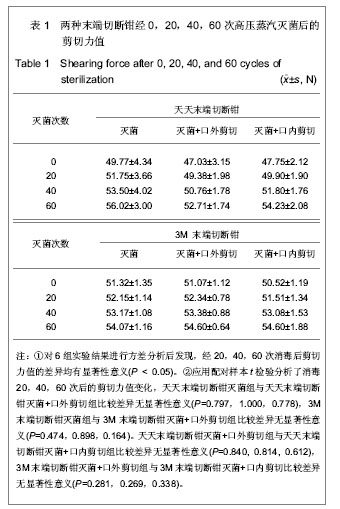
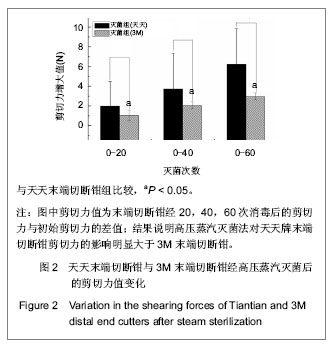
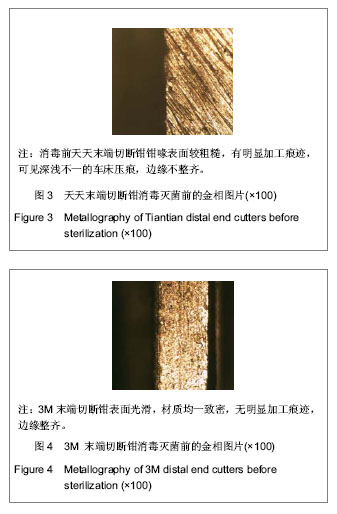
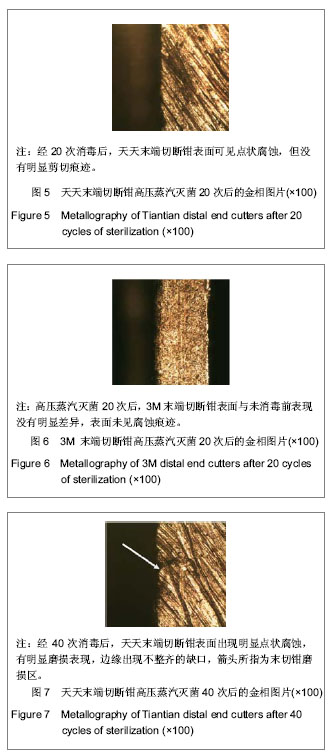
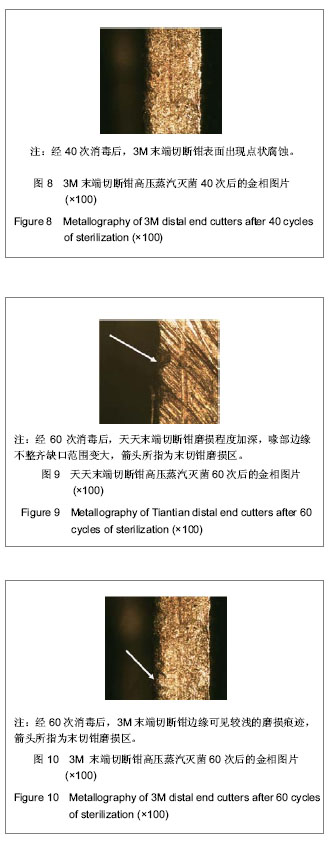
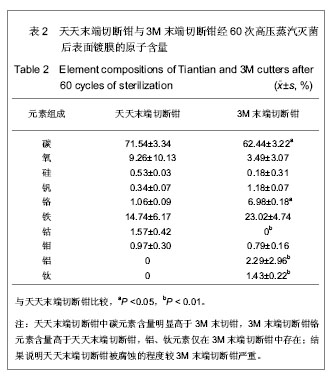
.jpg)
.jpg)
.jpg)